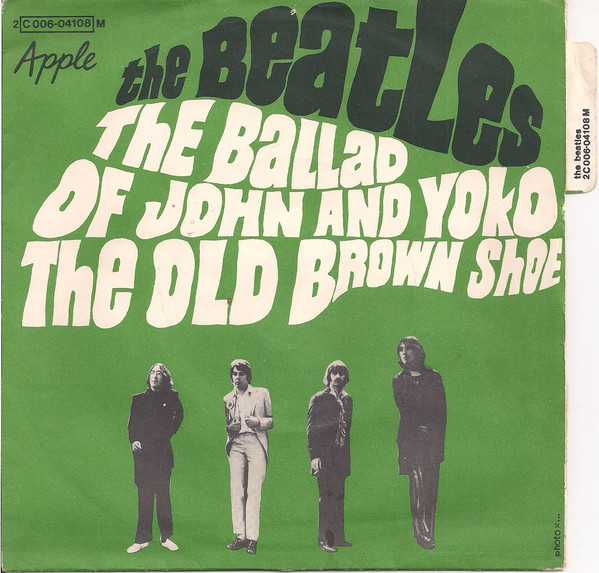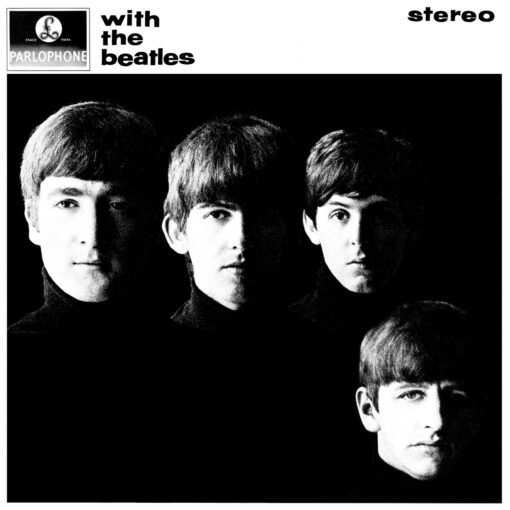- Published in 1969
- Author: Harrison
- Track 21 on “The Beatles 1967-1970” (Blue Album)
- Track 12 on “Past Masters Volume 2“
GEORGE 1980: “I started the chord sequences on the piano, which I don’t really play, and then began writing ideas for the words from various opposites… Again, it’s the duality of things– yes no, up down, left right, right wrong, etcetera.”
About “Old Brown Shoe”

“Old Brown Shoe”, penned by Harrison, was unveiled in May 1969 as the B-side to the chart-topping single “The Ballad of John and Yoko“. Its release marked yet another milestone in the band’s illustrious discography.
While initially relegated to the status of a B-side, “Old Brown Shoe” has since found a lasting place in Beatles enthusiasts’ hearts through its inclusion in pivotal compilation albums such as 1967–1970 and Past Masters Volume 2. Among critics and fans alike, the song holds a special distinction, often regarded as one of Harrison’s most exceptional compositions from the Beatles’ extensive catalog. This acclaim predominantly centers on Harrison’s masterful guitar solo, which stands as a testament to his skill and creativity.
Lyrically, “Old Brown Shoe” embarks on a journey into the realm of duality, suggesting a contemplation of contrasting elements or perspectives. Harrison’s penchant for introspective and philosophically-driven songwriting is palpable in this piece, adding an extra layer of depth to its musical tapestry.
The song’s genesis can be traced back to the early months of 1969, during rehearsals for the “Let It Be” album. It was here that the Beatles began to explore “Old Brown Shoe” alongside two other overlooked Harrison compositions: “Something” and “All Things Must Pass.” The formal recording of “Old Brown Shoe” took place in April, as part of the early sessions for the iconic “Abbey Road” album, marking a significant chapter in the Beatles’ creative journey.
In subsequent years, “Old Brown Shoe” continued to be a noteworthy presence in the Beatles’ legacy. The release of the Beatles’ Anthology 3 compilation in 1996 brought forth a demo version of the song from 1969, allowing fans a glimpse into its early stages. George Harrison himself revisited the song, delivering a live rendition for his 1992 album, “Live in Japan,” further cementing its significance in his solo repertoire.
Following Harrison’s passing in 2001, “Old Brown Shoe” received a poignant tribute at the Concert for George event held at London’s esteemed Royal Albert Hall in November 2002. Renowned musician Gary Brooker took the stage, offering a heartfelt performance that honored Harrison’s enduring musical legacy. Through its enduring appeal and continued presence in various musical settings, “Old Brown Shoe” remains a cherished gem in the tapestry of Beatles music, serving as a testament to George Harrison’s indelible contribution to the world of music.
Meaning of “Old Brown Shoe”
“Old Brown Shoe” presents a combination of intriguing and enigmatic lyrics. While Harrison never explicitly discussed the meaning behind the song, various interpretations have been suggested. One prevalent interpretation revolves around the theme of duality. The lyrics seem to touch on opposing elements, suggesting a contemplation of contrasting aspects or perspectives. This theme of duality may resonate with George Harrison’s broader interest in Eastern spirituality and philosophy.
The use of metaphors and vivid imagery in the lyrics may signify deeper meanings beyond literal interpretation. The “old brown shoe” itself could represent something familiar, comforting, and reliable in the midst of life’s complexities. As with many Beatles songs, the lyrics of “Old Brown Shoe” may be a personal expression or reflection of Harrison’s own experiences, thoughts, or feelings at the time of writing. However, Harrison never provided specific details about the song’s autobiographical elements.
Ultimately, the true meaning of “Old Brown Shoe” is known only to George Harrison, and he chose not to elaborate on its specific intent. This ambiguity allows listeners to engage with the song in a way that is personal and meaningful to them, adding to its enduring appeal and mystery.
Personnel
- George Harrison – vocals, electric guitars, Hammond organ, bass guitar
- John Lennon – backing vocals
- Paul McCartney – backing vocals, tack piano
- Ringo Starr – drums



